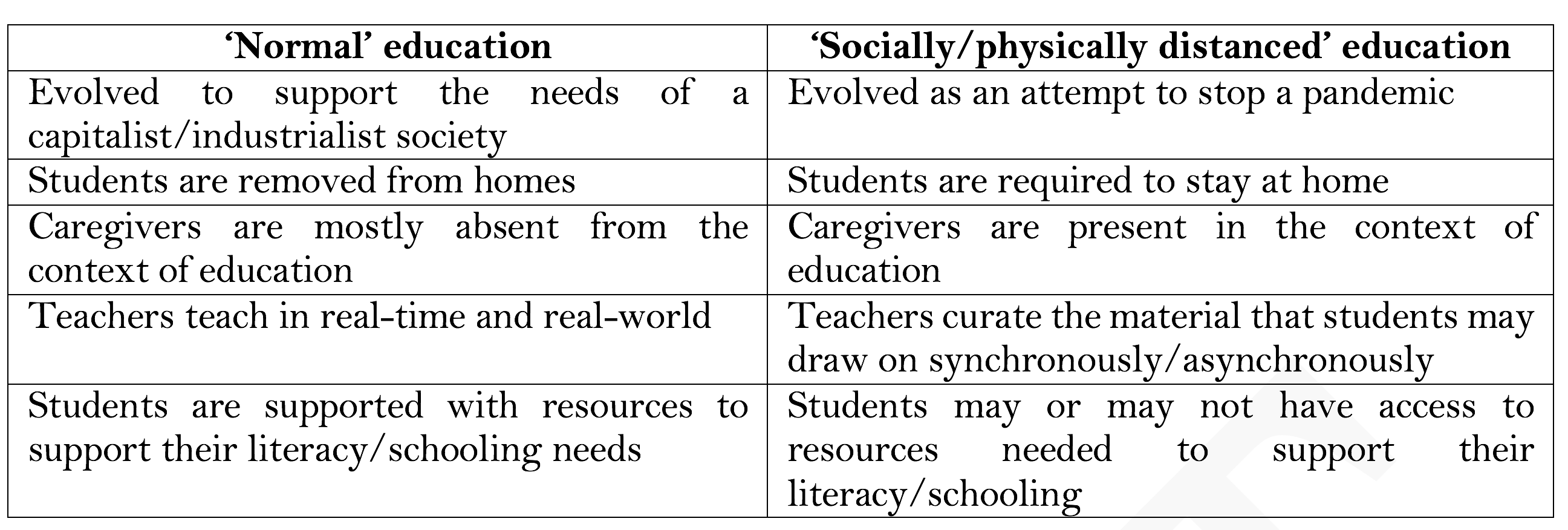Education in the time of COVID19 – Context
According to some reports, over half of the world’s student population has been impacted by COVID19. In many places, schools are closed, and people are in self-isolation/quarantine. There are suggestions that these numbers will rise, and the pandemic will continue to impact communities, including educational institutions, for at least a few months.
Educational institutions have responded to the COVID19 pandemic in different ways, with the range of responses and options available to students, parents, and teachers being partly dependent on resources available in a community and teachers’ training/experience. As a consequence, there are widening gaps in access to and quality of education available to students around the world.
In addition, even where institutions are adopting approaches to distance education (using media, technology, etc.), it appears that most teachers are transferring their course content to a different delivery method; and, at times, adjusting the assessment to suit distance-learning.
What is mostly missing at the moment – and what this practical course will focus on – is a rethinking of education given the major changes in context of education between ‘normal’ times and ‘COVID19’ times.
It is for the first time in our living human history that such a large number of caregivers (e.g., parents) and children are staying together for an extended period of time with limited mobility and/or interaction with others, including teachers and friends. Thus, the very nature in which education is currently taking place has radically changed: this requires a rethinking of the goals, approaches, and functions of education during the times of COVID19.
Before we consider some of the elements in education that need rethinking, it might be useful for us to differentiate between education in ‘normal’ settings and education in the context of COVID ‘social/physical distancing measures’. Below, we will enumerate a few differences between ‘normal’ education and ‘socially/physically distanced’ education.
As the Table above identifies, there are some fundamental differences in the context of the old ‘normal’ education and the new socially/physically distanced education. It needs to be noted that socially/physically distanced education is community embedded, i.e., it takes places within the homes and residences of the students. This is in contrast with ‘normal’ education, which takes the students away from home and thus separates parents from children. Furthermore, given the large variations in the backgrounds, training, experiences etc. of parents/caregivers, students will have varied access to information and support, especially in the form of traditional and academic literacy and language.
As it is possible that some students will be around people who have limited or no literacy, a ‘community-embedded education’ should avoid an over-reliance on literacy (both as a pre-requisite and as a goal/outcome). Instead, it needs to expand the ways in which we can develop, understand, and share meanings and use this knowledge to create and do things. Or, in other words, community-embedded education should be active, practical, and purpose oriented.
The differences between ‘normal’ and ‘community-embedded’ education require us to ask some fundamental questions about the goals and purposes of ‘normal’ education and, at the same time, consider alternative goals and approaches to education.
Questioning the fundamentals of education has become an essential need of the time. This allows us to reimagine education as a community-embedded practice which serves community needs. While teachers in community-embedded education provide resources and help set goals and pathways that students and caregivers can take, it is the caregivers and others in the immediate vicinity of the students who will be engaged in the actual realisation of the educational practice (and, hence, its outcomes). As such, it is necessary for us to have a good sense of the caregivers’ skills, experiences, and abilities and to consider these in designing our teaching objectives and material.
This practical course, Education in the time of COVID19, is open to all, including students, teachers, parents, school administrators, others interested. There are no registration fees. The entire course, which will include four phases, will run online through social media and e-mail.
During the course, participants will demonstrate their ability to envision, curate, design, develop, and implement a CREDIBLE project. Participants will draw on their own strengths and experiences to create things that will be of benefit to them and their communities.
FLC will award a certificate of completion to all those who complete all the four phases of the course.
Each phase of the course will be supported with audio-visual resources as well as live lectures and tutorial sessions. You will be required to submit work before progressing to the ‘next’ phase. Given the online nature of this course, some of the course deadlines might be negotiable.
